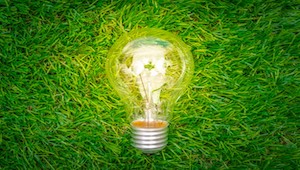Are you thinking about going green? Even if you haven’t purchased that electric vehicle yet, there are some simple everyday steps you can take to help our planet. Being a responsible homeowner means we all need to do our part to reduce our carbon footprints for generations to come. Here are some great options you can implement today!
- Bring & Use Your Cloth Grocery Bags
Currently, eight states have single-use plastic bag bans in place, this includes California, Connecticut, Delaware, Hawaii, Maine, New York, Oregon, and Vermont. Many other retailers now impose a five- or 10-cent charge for plastic or paper bags. But you can purchase everything from specialty mesh bags for produce to insulated totes for freezer items. Machine-washable canvas carry-all’s are also a great option. And the more you use your cloth grocery bags, it’ll become habit-forming, so you’ll remember to grab them before going into the store.Keep some in your car so you are always prepared for that last minute grocery trip!
- Reusable Water Bottles
This almost seems crazy but in 2017 Americans threw away nearly 50 billion water bottles, yes, billion with a B! And only approximately 23% of those made it into a recycling bin. Seriously? Buying your own reusable water bottle, you can refill at home (or anywhere) will save you money and you’ll be keeping plastic out of the landfill. It’s a win-win for both you and the environment.
- Switch to Reusable Glass or Biodegradable Straws
Chances are you’ve seen the shocking 2015 video of a sea turtle with a plastic straw embedded in its nose. Kudos to service businesses such as Starbucks and Alaska Airlines for now banning plastic straw use. There are an estimated 500 million straws used every day in America alone. So, what can you do? Purchase some paper straws and take them with you. Or get a set of glass straws you can put back into a case or sleeve once used and then simply pop them into your dishwasher. It’s funny how seeing a coworker taking the time to use something so simple as a straw alternative, can inspire others to do the same.
- Use Biodegradable Cutlery
While restaurants seem to be a little slow with jumping on this bandwagon, single-use cutlery is another plastic that accumulates in landfills and will stay there forever. Change is always brought about by someone questioning something, so asking your local restaurants to switch to compostable cutlery is a great first step. In the meantime, you can buy completely biodegradable bamboo cutlery.
- Reusable Bamboo Paper Towels
Speaking of bamboo, bamboo paper towel replacements are a cool option to traditional single-use paper towels. They can be washed and reused up to 100 times per piece, and come in a roll just like regular paper towels you can use in your current dispenser. For about $33 you’ll get a roll of 30 absorbent bamboo sheets that’s equivalent to using 286 classic paper towels.
- Stop Using Single-Use Plastic Sandwich Bags
If you’re making lunches every day, especially if that includes snacks for a family, just think of the plastic bags stacking up in the landfill from your household alone. There are great options out there for using traditional single-use plastic sandwich bags, including everything from biodegradable versions that are completely compostable, to reusable and dishwasher safe silicone storage bags, even beeswax snack bags that you can DIY if you are so inclined!
- Sub Out Single-Use Coffee Pods
Up to 40% of us across America use those convenient coffeemakers with the wasteful coffee pods, meaning we’re contributing to the 39,000 capsules being produced every minute worldwide. Yes, every minute! While some companies offer recycling programs for returning the pods, these same companies admit almost 71% of their coffee pods end up in the landfill. What can you do? Make a switch to reusable coffee pods that you can simply fill with the favorite ground coffee of your choice.
- LED Light Bulbs
You can save money on your household energy bills by simply switching out old traditional light bulbs for 80% more efficient LED bulbs. Besides using less energy, they’re eco-friendly as they can last up to 13 years compared to a one-year lifespan of an incandescent bulb. It’s a no-brainer!
- Conserve Your Water Consumption
If you don’t already have low-flow toilets in your household, it’s time to think about switching them out. Consider installing low-flow showerheads designed to use up to 40% less energy and water, which generally constrict usage to 2.5 gallons or less per minute. Many of these showerheads offer high-pressure water output so it’s an easy switch where you may not even notice you’re consuming less water overall.
- Personal Hygiene Products
If you have ever used any type of mildly abrasive cleanser, you’ve probably noticed those with microbeads have already been banned as they’re accumulative and dangerous for our ocean marine life. Plastic shampoo and conditioner bottles are just as harmful as we generate an estimated 80 billion of them each year worldwide! Alternatives to those numerous bottles are making shifts to products such as solid shampoo, conditioner, and soap bars that are presented in eco-friendly packaging. Many of these also contain fewer chemicals and are longer-lasting. Instead of traditional plastic toothbrushes, consider switching to a biodegradable bamboo brush. If you can’t live without your favorite shampoo or conditioner, see if you can at least buy them in bulk – and be sure to ask the company if they only use recycled materials to produce their packaging.
You can do your part as a homeowner by saving time, increasing your homes’ value, and generally being less stressed by utilizing all the convenient features of the easy-to-use DomiDocs digital platform where you can do everything from organizing your important household documents to tracking home improvements and expenses, and onto analyzing the current market value of your home through the True Value Index®
Author: Connie Motz



